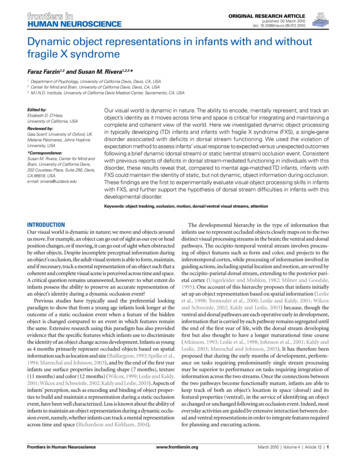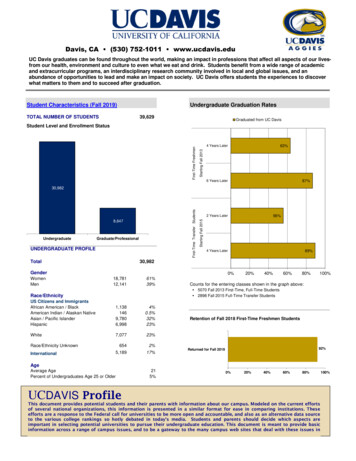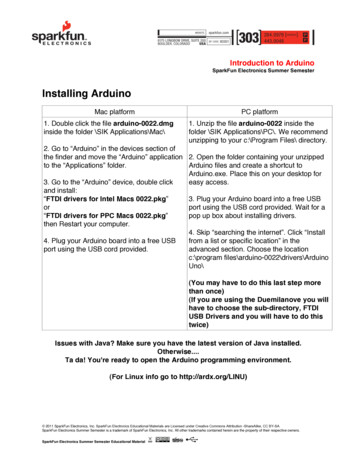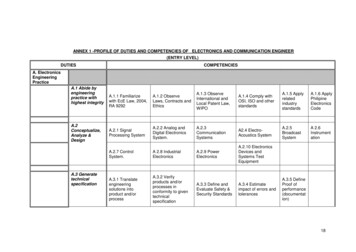
Transcription
CardiographPageWriter XLiM1700AINSTRUCTIONS FOR USE
NoticeAbout This EditionEdition 9Printed in the USAPublication numberM1700-92909All rights are reserved.Reproduction in whole or in partis prohibited without the priorwritten consent of the copyrightholder.inconsistent with the physician’sinterpretation.Philips assumes no liability forfailures resulting from RFinterference between PhilipsWARNINGmedical electronics and anyAs with electronic equipment, radio frequency generatingThe information in this guide Radio Frequency (RF)equipment at levels exceedingapplies to the PageWriter XLi interference between thethose established by applicablecardiograph. This information is cardiograph and any existing RF standards.transmitting or receivingsubject to change withoutCAUTIONequipment at the installationnotice. Philips shall not besite, including electrosurgical Use of accessories other thanliable for errors containedequipment, should be evaluated those recommended by Philipsherein or for incidental orcarefully and any limitationsmay compromise productconsequential damages inconnection with the furnishing, noted before the equipment is performance.placed in service.performance, or use of thisTHIS PRODUCT IS NOTmaterial.Radio frequency generationINTENDED FOR HOME USE.Edition Historyfrom electrosurgical equipment IN THE U.S., FEDERAL LAWEdition 1 May 1990and close proximity transmitters RESTRICTS THIS DEVICEEdition 2 July 1991may seriously degradeTO SALE ON OR BY THEEdition 3 January 1992performance.ORDER OF A PHYSICIAN.Edition 4 April 1993Medical Device DirectiveEdition 5 July 1993Like all electronic devices, thisThe PageWriter XLiEdition 6 June 1994cardiograph is susceptible toEdition 7 January 1995electrostatic discharge (ESD). Cardiograph complies with theEdition 8 April 2000Electrostatic discharge typically requirements of the MedicalDevice Directive 93/42/EECEdition 9 February 2002occurs when electrostaticand carries the0123 markenergy is transferred to theCopyrightaccordingly.patient, the electrodes, or theCopyright 2001 Philipscardiograph. ESD may result in Authorized EU-representative:Electronics North AmericaECG artifact that may appear as Philips Deutschland GmbHCorporation Philips MedicalHerrenbergerstrasse 130narrow spikes on theSystemscardiograph display or on the D-71034 Boeblingen3000 Minuteman RoadGermanyprinted report. When ESDAndover, MA 01810-1099occurs, the cardiograph’s ECG Fax: 49-7031-14-2346USAinterpretation may be(978) 687-1501ii
Safety SummarySafety Symbols Marked on the CardiographThe following symbols are used on the cardiograph.Caution - See operating instructionsType CF, defibrillation protectedAlternating currentEquipotential (this is on the ground lug)The following symbols appear on the cardiograph packaging.Keep dryTemperature and relative humidityrangesFragileiii
Conventions Used in This ManualWARNINGWarning statements describe conditions or actions that can result in personal injuryor loss of life.CAUTIONCaution statements describe conditions or actions that can result in damage tothe equipment or software.NOTENotes contain additional information on cardiograph usage.Softkey represents the temporary key labels that appear on the keyboarddisplay.Key represents keys on the front panel.iv
Documentation MapDocumentation MapIf you want to:Use this manual:Verify that all equipment is includedPacking ListRecord ECGsOperating GuideEnter patient IDMake copies of ECGsStore ECGsTransmit or receive ECGsTroubleshoot problemsMaintain the cardiographSet up the cardiographInstall the batteryInstall the softwareLoad paperChange applicationsInstall or use Preview PlusConfigure the cardiographInstructions for UsePrepare the patientMaintain the cardiographInstall and use the modemConfigure and use Special ApplicationsInstructions for Usev
Documentation MapIf you want to:Use this manual:Order suppliesUse filtersUnderstand analysisviPhysician’s Guide
ContentsSafety Summary . . . . . . . . . . . . . . . . . . . . . . . . . . . . . . . . . . iiiSafety Symbols Marked on the Cardiograph . . . . . . . . . iiiConventions Used in This Manual . . . . . . . . . . . . . . . . . iiiDocumentation Map . . . . . . . . . . . . . . . . . . . . . . . . . . . . . . . . v1IntroductionAbout This Manual . . . . . . . . . . . . . . . . . . . . . . . . . . . . . . . 1-12Acquiring an ECGECG Technique. . . . . . . . . . . . . . . . . . . . . . . . . . . . . . . . . .Relaxing the Patient . . . . . . . . . . . . . . . . . . . . . . . . . . .Preparing the Patient . . . . . . . . . . . . . . . . . . . . . . . . . . .Preparing the Skin at the Electrode Positions . . . . . . . .Securing the Electrodes . . . . . . . . . . . . . . . . . . . . . . . .Monitoring ECG Quality . . . . . . . . . . . . . . . . . . . . . . . . . .Quality Messages on the Cardiograph’s Display . . . . .32-12-22-22-32-42-62-7Understanding the PageWriter XLi Special ApplicationsOverview . . . . . . . . . . . . . . . . . . . . . . . . . . . . . . . . . . . . . .Indications for Use . . . . . . . . . . . . . . . . . . . . . . . . . . . .Understanding TPI Variables . . . . . . . . . . . . . . . . . . . .Understanding ACI TIPI Variables . . . . . . . . . . . . . . .Using the TPI and ACI-TIPI Applications . . . . . . . . .Analyzing an ECG with the Predictive Instruments . .Generating Reports with the Special Applications OffGenerating Reports with the Special Applications OnAuto Analysis and the Default Choice . . . . . . . . . . . .Generating a STAT ECG Report . . . . . . . . . . . . . . . . .3-13-13-23-33-33-43-53-63-73-8Contents-1
4Choosing Report FeaturesECG Formats . . . . . . . . . . . . . . . . . . . . . . . . . . . . .The Auto Report . . . . . . . . . . . . . . . . . . . . . . . .Auto Report Information . . . . . . . . . . . . . . . . .Manual Formats . . . . . . . . . . . . . . . . . . . . . . . .The Manual Lead Sets . . . . . . . . . . . . . . . . . . .5ECG StorageAdvantages of Disk Storage . . . . . . . . . . . . . . . . . .Storing Reports with the SpecialApplications Off . . . . . . . . . . . . . . . . . . . . . . .Storing Reports Using Auto Analysis andthe Default Choice . . . . . . . . . . . . . . . . . . . . . .Automatically Storing Reports UsingForced Auto-Store . . . . . . . . . . . . . . . . . . . . . .Disk Handling and Maintenance Instruction . . . . .Using the ECG-Log and Store-Log . . . . . . . . . . . .Printing ECG Logs . . . . . . . . . . . . . . . . . . . . . . . . .64-14-14-14-64-65-15-25-25-25-35-45-7Configuring Your CardiographUsing Configuration Menus . . . . . . . . . . . . . . . . . . 6-1Selecting Configuration Parameters . . . . . . . . . . . 6-3Understanding Global Configuration . . . . . . . . . . . 6-4Interpretation Parameters. . . . . . . . . . . . . . . . 6-10Line Frequency . . . . . . . . . . . . . . . . . . . . . . . 6-11Selecting Custom Lead Groups . . . . . . . . . . . 6-11Selecting AutoCopy . . . . . . . . . . . . . . . . . . . . 6-11Selecting ECG Management Parameters . . . . 6-12Selecting Battery Timeout Periods . . . . . . . . 6-12Setting a Password . . . . . . . . . . . . . . . . . . . . . 6-13Turning Off Unused ID Fields . . . . . . . . . . . . . . . 6-13Storing the Configuration Information . . . . . . 6-14Using a Stored Configuration . . . . . . . . . . . . . 6-15Contents-2
Printing the Configuration . . . . . . . . . . . . . . . 6-167Setting Up Your Cardiograph for TransmittingECGsTransmitting ECGs Directly . . . . . . . . . . . . . . . . . . 7-3Configuring the Cardiograph to TransmitECGs Directly . . . . . . . . . . . . . . . . . . . . . . . . . 7-4Transmitting ECGs by Telephone to Another Site . 7-5Installing the Modem(For United States use only) . . . . . . . . . . . . . . . 7-5Connecting a Telephone to the Same Lineas the Modem . . . . . . . . . . . . . . . . . . . . . . . . . . 7-7Configuring the Cardiograph for Modem Usage7-7Entering the Phone Number . . . . . . . . . . . . . . . 7-9Configuring the Cardiograph for AutoDial . . . 7-9Installing the Modem on the Cart . . . . . . . . . 7-10Transmitting ECGs by FAX to Another Site . . . . 7-11Installing the FAX/Modem . . . . . . . . . . . . . . 7-12Connecting a Telephone to the Same Lineas the FAX/Modem . . . . . . . . . . . . . . . . . . . . 7-14Configuring the Cardiograph for FAX Usage 7-14Entering the Phone Number . . . . . . . . . . . . . . 7-15Transmitting an ECG via FAX . . . . . . . . . . . 7-16Printing an ECG on an HP LaserJet Printer . . . . . 7-17Setting up the LaserJet Printer7-18Configuring the Cardiograph to Print ECGson the HP LaserJet . . . . . . . . . . . . . . . . . . . . . 7-18Receiving ECGs . . . . . . . . . . . . . . . . . . . . . . . . . . 7-20Configuring the Cardiograph toReceive ECGs Directly . . . . . . . . . . . . . . . . . 7-20Configuring the Cardiograph to ReceiveECGs via Modem . . . . . . . . . . . . . . . . . . . . . . 7-21Receiving an ECG via FAX . . . . . . . . . . . . . . 7-21Configuring the Cardiograph to Receivevia FAX . . . . . . . . . . . . . . . . . . . . . . . . . . . . . 7-22Contents-3
Receiving ECG Reports from a 5600CECG Management System . . . . . . . . . . . . . 7-22Receiving ECGs from Philips M1730A/M3700A TraceMaster ECG ManagementSystem . . . . . . . . . . . . . . . . . . . . . . . . . . . . 7-238TroubleshootingTroubleshooting Leads Off . . . . . . . . . . . . . . . . . .Troubleshooting ECG Noise . . . . . . . . . . . . . . . . .Understanding Error Messages. . . . . . . . . . . . . . . .Calling for Assistance. . . . . . . . . . . . . . . . . . . . . . .Solving Equipment Problems . . . . . . . . . . . . . . . . .98-18-18-38-38-4SuppliesAvailability . . . . . . . . . . . . . . . . . . . . . . . . . . . . . . . 9-1A Lead SystemsFrank Leads . . . . . . . . . . . . . . . . . . . . . . . . . . . . . . A-1Special Lead Configurations. . . . . . . . . . . . . . . . . . A-2V3R, V4R, V7 and V8 . . . . . . . . . . . . . . . . . . . A-2VX1, VX2, VX3 and VX4 . . . . . . . . . . . . . . . . A-2GlossaryContents-4
1 Introduction12About This ManualThis guide contains reference information and configuration instructions forexperienced PageWriter XLi cardiograph users. For additional help on usingyour cardiograph refer to the Philips PageWriter XLi Operating Guide.1-1
2 Acquiring an ECGOne of the most important aspects of recording a clear ECG is goodECG technique. This chapter includes a review of recommended ECGtechnique as well as information about using the patient module.NOTE2Computerized ECG analysis should always be reviewed by aqualified physician.ECG TechniqueECG technique is very important, both to avoid difficulty when takingthe ECG and to achieve the best quality result. There are three keyaspects of good ECG technique:lhelping the patient to relaxlpreparing the patient for electrode connectionlusing the patient module to check lead connectionsFor best results, perform the following steps in the order given. Moredetails on good technique follow this list.lCheck that the patient is comfortable and relaxed. Reassurethe patient that the procedure is painless.lIf possible, place the patient away from electrical fixtures andtheir power cords, and away from the cardiograph’s powercord if AC power is on.lExpose the patient’s forearms, lower legs, and chest.lBeginning with the right leg position, apply electrolyte andattach electrodes.2-1
Acquiring an ECGNOTEDisposable electrodes, when used properly, may be used foracceptable ECGs. For best results, prepare the skin and carefullyfollow manufacturer’s usage instructions.Relaxing the PatientThe more the patient relaxes, the less the ECG will be affected bynoise. Your good technique helps the patient relax. You can help thepatient to relax by the following:lMake sure the patient is lying down and comfortable. Thepatient’s arms and hands must be relaxed. If the table is toonarrow, place the patient’s hands under the buttocks toprevent muscle tension in the arms.lWhen possible, take the ECG in a quiet room or area whereothers can’t see the patient. Privacy is important to relaxation.Draw the curtains around the bed area when taking the ECGin a room with other people.lGain the patient’s confidence by explaining the test and that itwon’t hurt.lYour calm, relaxed attitude will help put the patient at ease.lDon’t let the patient move unnecessarily. It’s also best toavoid all conversation during the actual ECG recording tokeep the patient as still as possible.Preparing the PatientSelecting the Electrode Positions, Table 2-1, shows the properelectrode positions for taking an ECG. Put the electrodes in the correctanatomical locations according to information in Figure 2-1.Additional information concerning other lead systems may be foundin Appendix A.2-2
Acquiring an ECGThe tip of each lead wire is lettered and color coded for easy leadidentification. For example, make sure that the RA lead wire andelectrode connect to the right arm and the RL lead wire and electrodeconnect to the right leg.Table 2-1 Standard 12-Lead Electrode PositionsLead2PositionRLOn the right leg (inside calf, midway between knee and ankle)LLOn the left leg (inside calf, midway between knee and ankle)RAOn the right arm (on the inside)LAOn the left arm (on the inside)V1Fourth intercostal space, at right sternal marginV2Fourth intercostal space, at left sternal marginV3Midway between V2 and V4V4Fifth intercostal space at left midclavicular lineV5Same transverse level as V4, on anterior auxiliary lineV6Same transverse level as V4, at left midaxillary lineFigure 2-1 Standard 12-Lead Electrode Positions2-3
Acquiring an ECGPreparing the Skin at the Electrode PositionsSince dry skin is a relatively poor electrical conductor, you mustprepare the skin to ensure good contact between the skin and theelectrode. Before securing the electrodes, you must lower the skinresistance at the electrode site by:NOTElMaking sure that all electrodes are clean and bright. (Dirty orcorroded electrodes prevent a good electrical connection.)lAvoiding bony areas. Select flat, fleshy sites. You don’t haveto shave hair from the skin unless the hair is very thick.lRubbing the skin briskly with the edge of the electrode or agauze pad until the skin is slightly red, but not bruised.lApplying electrolyte to the prepared areas on the skin. Rubsome electrolyte into the skin, but leave a slightly moistresidue. Do not spread electrolyte on the chest areabetween electrodes. This will cause distorted waveforms onthe ECG.Do not use alcohol or acetone pads in place of the electrolytebecause they impair the electrode contact with the skin.Securing the ElectrodesTwo types of electrodes are included in the accessory box:lMetal plate limb electrodes, held in place on the patient byrubber straps.lWelsh cup chest electrodes, held in place by suction.Securing the electrodes is a key part of good ECG technique andobtaining a good ECG trace. To avoid jittery waveforms, make surethat the electrodes are secure. Do not overtighten limb plate2-4
Acquiring an ECGelectrodes, since this might cause discomfort which results in muscleartifact on the waveforms.Fasten the electrodes to the chest positions by squeezing the rubberbulb of the suction cup. See Figure 2-2. The bulb should be partiallydeflated when the electrode is firmly attached to the chest.A good test for firm electrode contact is to grasp the electrode and tryto move it. If it moves easily, the electrode connection is too loose. Ifit digs into the flesh, the electrode is too tight. Do not allow the chestelectrodes to move in any way. Check the patient module display forindications that the connections are good. Ideally, the noise bar shouldremain in the green zone.Do not leave suction electrodes connected to the chest for prolongedperiods. The suction can cause intradermal hemorrhaging.Figure 2-2 Connect Leadwires to Electrodes2-52
Acquiring an ECGFigure 2-3 Fasten ElectrodesMonitoring ECG QualityThere are three ways that the PageWriter XLi helps you monitor thequality of your ECG recordings.2-6lusing the patient module displaylusing the preview screenlobserving quality messages on the cardiograph’s display
Acquiring an ECGYou can stop the recording before or during printing if you see artifactor other ECG waveform problems on the screen. Modify leadplacement or improve patient preparation and resume recording theECG.For further instructions on using the patient module display and thepreview screen, refer to the PageWriter XLi Operating Guide.Quality Messages on the Cardiograph’s DisplayAfter you start an Auto ECG recording, the cardiograph’s display willshow messages which indicate the quality of the recording. If there isminimal noise and all electrodes are securely attached, the messageECG ok will appear.Some messages indicate problems with the leads. They list thecondition and the action to take. There are four conditions whichaffect the ECG:lLeads offlAC noiselArtifactlBaseline wanderIf any of these conditions are severe, the message directs you to retrythe recording. Correct the problem and then resume recording theECG.2-72
3 Understanding the PageWriter XLi SpecialApplicationsOverviewThe ACI TIPI (Acute Cardiac Ischemia - Time Insensitive PredictiveInstrument) and the TPI (Thrombolytic Predictive Instrument) aresoftware products that enhance the computer-assisted ECG analysiscapabilities of the PageWriter XLi Cardiograph. These "PredictiveInstruments" generate 0-100% Predicted Probability scores of ACI(Acute Cardiac Ischemia) and patient outcome with and withoutthrombolytic therapy for acute myocardial infarction (AMI). Thesepredicted probabilities are based on ECG features, patient age,gender, blood pressure, chest pain status and time since ischemicsymptom onset. The cardiograph can be configured to automaticallyprint these probabilities on the Auto ECG report.3Indications for UseThe ACI-TIPI is intended for use as an aid to clinicians in thediagnosis and triaging decision process of patients with ACI, whichincludes unstable angina pectoris and acute myocardial infarction(AMI).The TPI is intended for use as an aid to clinicians identifying whichpatients with AMI are appropriate candidates for thrombolytictherapy. TPI is intended for adult patients, aged 35-75, diagnosed withsymptoms of acute myocardial infarction.These programs can be used in real-time and retrospective settingssince they rely on information that is readily available in theemergency department (ED), or by retrospective review of thepatient’s medical record. The emergency physician’s real-timedecision making process is aided by having the predictive instrumentsincorporated into the electrocardiograph. The predictive scores, once3-1
Understanding the PageWriter XLi Special Applicationsacquired, can then be used along with actual patient outcome to helpimprove patient management practices retrospectively.The predictive instruments provide the physician with tools to:NOTElaid diagnosis and triage of some patients with symptomssuggestive of ACIlidentify those patients most likely to benefit fromthrombolytic therapylfacilitate the earliest possible administration of thrombolytictherapyFor intended use and contraindication information, consult thePredictive Instrument Physician’s Guide for important information.Understanding TPI VariablesThere are nine predictors of thrombolytic-related benefits and riskswhich include six clinical factors and detailed information on threeECG features.The six clinical factors are:3-2ltime since ischemic onsetlpatient agelpatient genderlpatient blood pressure (systolic and diastolic)lpatient’s history of diabeteslpatient’s history of hypertension
Understanding the PageWriter XLi Special ApplicationsNOTEFor each of the clinical factors listed above, patient data must beentered in order to produce a TPI report.The three ECG features are:lthe presence or absence of pathological or significant Qwaveslthe presence and degree of ST segment elevation ordepressionlthe presence and degree of T wave elevation or inversion3Understanding ACI TIPI VariablesSeven variables are used to predict Acute Cardiac Ischemia. Thesevariables include four clinical factors and detailed information onthree ECG features.The four clinical factors are:NOTElthe presence or absence of chest pain or pressure, or left armpainlif chest pain or pressure, or left arm pain is the patient’s mostimportant presenting symptomlpatient agelpatient genderFor each of the clinical factors listed above, patient data must beentered in order to produce the ACI-TIPI report.3-3
Understanding the PageWriter XLi Special ApplicationsThe three ECG features are:lthe presence or absence of pathological or significant Qwaveslthe presence and degree of ST segment elevation ordepressionlthe presence and degree of T wave elevation or inversionThe exclusionary cases for both the TPI and ACI-TIPI applicationsare listed in the Predictive Instrument Physician’s Guide. Please referto this document for information.Using the TPI and ACI-TIPI ApplicationsTo use the TPI and ACI-TIPI applications, you must configure thecardiograph and enable the applications. There are several types ofreports that are produced by the cardiograph. These reports aresummarized in Table 3-1.3-4
Understanding the PageWriter XLi Special ApplicationsTable 3-1 PageWriter XLi ReportsReport TypeStandard 09 (Std 09)Standard P4 (Std P4)ACI-TIPI (T0)Risk ManagementTPI (H0)Contents of ReportlECG waveforms,measurementslECL 09 AdultInterpretationlECG waveforms,measurementslECL P4 PediatricInterpretationlECG waveformslTIPI AnalysislNo Risk ManagementReportlRisk ManagementReport:- 1 page summarizingclinical informationand may be used bythe Clinician to document clinical decisionslECG waveformslTPI AnalysisNotes3lOnly availablewhen T0 is enabledlThe ACI-TIPIReport will also beprintedAnalyzing an ECG with the Predictive InstrumentsThe flexibility of the PageWriter XLi allows you to configure thePredictive Instruments based on the type of patients presenting inyour clinical setting. Using the Configuration Menu, you can set upyour cardiograph to provide the desired analysis.3-5
Understanding the PageWriter XLi Special ApplicationsWhen first turned on the PageWriter XLi cardiograph will have theSpecial Applications turned off. The Special Application choices arepart of the Global Configuration Menu and enable access to thefollowing settings.Table 3-1 Special Applications SettingsParameterDefault value whenSpecial Apps offChoicesResearch LeadsOff/VX1-VX4/V4R-V8OffDefault Adult Criteria09/P409Default Pediatric Criteria09/P4P4Patient ID CriteriaOn/OffOffACI-TIPIOn/OffOffRisk Mgmt.On/OffOffRisk rmal/CabreraNormalStorage g4OffDefault Storage CriteriaDef Adult/Ped, TIPI, TPIDef Adult/PedIt is important to understand that it is possible to set the Default AdultCriteria and the Default Pediatric Criteria to be either 09 or P4. Thisflexibility is designed for unusual clinical settings, and you shouldalways be aware of just how your cardiograph is set up.3-6
Understanding the PageWriter XLi Special ApplicationsGenerating Reports with the Special Applications OffThis method of working enables any kind of report to be generated,however it does not allow for generation of multiple simultaneousreports. Through the top level Auto Analysis menu, you can specifythe kind of report to be made. There are five choices available: Adult,Pediatric, TIPI, or TPI, or Default.For each of these report options, here are the resulting reports givenwhen Special Applications are Off and the Auto button has beenpressed:lAdult: the XLi will do an 09 report (regardless of patient age)lPediatric: the XLi will do a P4 report (regardless of patientage)lTIPI: the XLi will do a TIPI report. A Risk Managementreport will not be generated.lTPI: the XLi will do a TPI report. TPI screening will notoccur.lDefault: the XLi will do an 09 report if the age is unspecifiedor above 15 years. The XLi will do a P4 report if the age is 15years or less.1. From the main display, press the F1 key until Auto Analysisappears.2.Press the F3 key to select the desired report format.3-73
Understanding the PageWriter XLi Special ApplicationsGenerating Reports with the Special Applications OnIt is possible to configure the PageWriter XLi to produce multiplereports. When the setting for Special Applications is turned to On,and the Auto button is pressed, there are five choices of reportsavailable: Adult, Pediatric, ACI-TIPI, TPI or Default. The first fourchoices and their resulting outcomes are described below.lAdult: the XLi will do the Default Adult Criteria Report(regardless of the patient’s age)lPediatric: the XLi will do the Default Pediatric CriteriaReport (regardless of the patient’s age)lACI-TIPI: the XLI will do a TIPI report. Also, if the RiskManagement Report is set to On in the Special Applicationsmenu and the ACI-TIPI Report risk factor falls within thelimits set up, a Risk Management Report will be produced.lTPI: the XLi will do a TPI report. TPI Screening will notoccur.Auto Analysis and the Default ChoiceIf Default is selected from the Auto Analysis menu, multiple reportsmay be produced when the Auto button is pressed. This is alsodependent upon what is enabled in Special Applications in theGlobal Configuration menu.lTPIlll3-8TPI is on and TPI Screening is off, a TPI report will begenerated.TPI and TPI Screening are on and the TPI Analysis Criteria are met, a TPI report will be generated.TPI and TPI Screening are on, but the TPI Analysis Criteria are not met, a TPI report will not be generated.
Understanding the PageWriter XLi Special ApplicationslACI-TIPIlllACI-TIPI is on, this will be the next report produced. Ifthe Risk Management Report is on and the ACI-TIPI calculated risk is between the low and high risk limits as setup in the Special Applications, then a Risk Managementreport will be produced.Standard ECGlPatient ID Criteria Off: the XLi will do the Default AdultReport if the patient’s age is specified as over 15. If thepatient’s age is 15 years or under, the Default PediatricReport will be produced.lPatient ID Criteria On and Patient ID Criteria Loaded:this custom interpretation report will be generated.lPatient ID Criteria On but Patient ID Criteria NotLoaded: a Null report will be produced.lPatient ID Criteria On but Patient ID Criteria NotEntered: the XLi will do the Default Adult Report if thepatient’s age is specified as over 15. If the patient’s age15 years or under, the Default Pediatric Report will beproduced.VectorcardiographylIf VCG is on and at least one of the X, Y or Z leads isincluded as a rhythm lead in the report type, withResearch leads off, then the XLi will produce a VCGreport.3-93
Understanding the PageWriter XLi Special ApplicationsGenerating a STAT ECG ReportIf your cardiograph has been configured with Special Applicationson, and with TPI and/or TIPI interpretations enabled, you may omitthese interpretations by running a STAT ECG. A STAT ECG isguaranteed to generate a single standard report (typically 09 AdultCriteria or P4 Pediatric Criteria) without the need for Patient IDinformation. A STAT ECG is initiated by pressing the Auto key twicein succession. A STAT report is produced even if Print Auto OFFin the Global Configuration menu.3-10
4 Choosing Report FeaturesThis chapter describes the various ECG reports and how to print theExtended Measurements report.ECG FormatsThe Auto ReportTwelve-lead Auto reports display a ten second ECG in the followingformats:l4Auto 3 x 4The Auto 3 x 4 format displays consecutive 2.5 secondsegments of 12 leads, three leads at a time. One or three leadscan be displayed as rhythm strips at the bottom of Auto 3 x 4report. The rhythm strips show the same 10 second segmentsas in the Auto 3 x 4 section of the report.lAuto 3 x 5The Auto 3 x 5 format displays consecutive 2 secondsegments of 12 leads. The 5th lead column shows theextended pediatric leads: V3R, V4R, and V7. One or threeleads can be displayed as rhythm strips at the bottom of theAuto 3 x 5 report. The rhythm strips show the same 10 secondsegments as in the Auto 3 x 5 section of the report.lAuto 4 x 4The Auto 4 x 4 format displays consecutive 2.5 secondsegments of 12 leads. The 4th row consists of the extendedresearch leads: VX1-VX4 or V3R, V4R, V7, and V8. TheAuto 4 x 4 report can show 1 rhythm strip.4-1
Choosing Report FeatureslAuto 6 x 2The Auto 6 x 2 format displays consecutive 5 secondsegments of 12 leads, six leads at a time.Auto Report InformationThe Auto report may be printed with patient ID information only orwith various types of analysis information. You can select whichinformation appears on the printed report. See Chapter 6,Configuring Your Cardiograph, for information on choosing whichfeatures will be printed on the report.Basic Measurements Report. The Basic Measurements reportincludes patient ID information and basic measurements for the ECG.These measurements, including heart rate, interval, and axismeasurements, are shown in the table below with their associatedsymbols as they appear on the report.Table 3-1 Basic MeasurementsSymbol4-2DescriptionUnitsRateHeart ratebeats per minutePRPR intervalmillisecondsQRSDQRS durationmillisecondsQTQT intervalmillisecondsQTcQT interval corrected for ratemillisecondsPFrontal P axisdegreesQRSFrontal mean QRS axisdegreesTFrontal T axisdegrees
Choosing Report FeaturesSeverity Report. This report shows a summary statement of theseverity derived from the ECG interpretation. There are five ECGseverities:lNormallOtherwise NormallBorderlinelAbnormallDefective DataInterpretive Report. The Interpretive report includes basicmeasurement information as well as statements from the analysis ofthe extended measurements derived from medical and technicalcriteria. This report also shows a summary state
ECG technique. This chapter includes a review of recommended ECG technique as well as information about using the patient module. NOTE Computerized ECG analysis should always be reviewed by a qualified physician. ECG Technique ECG technique is very important, both to avoid difficulty when taking the ECG and to achieve the best quality result.










